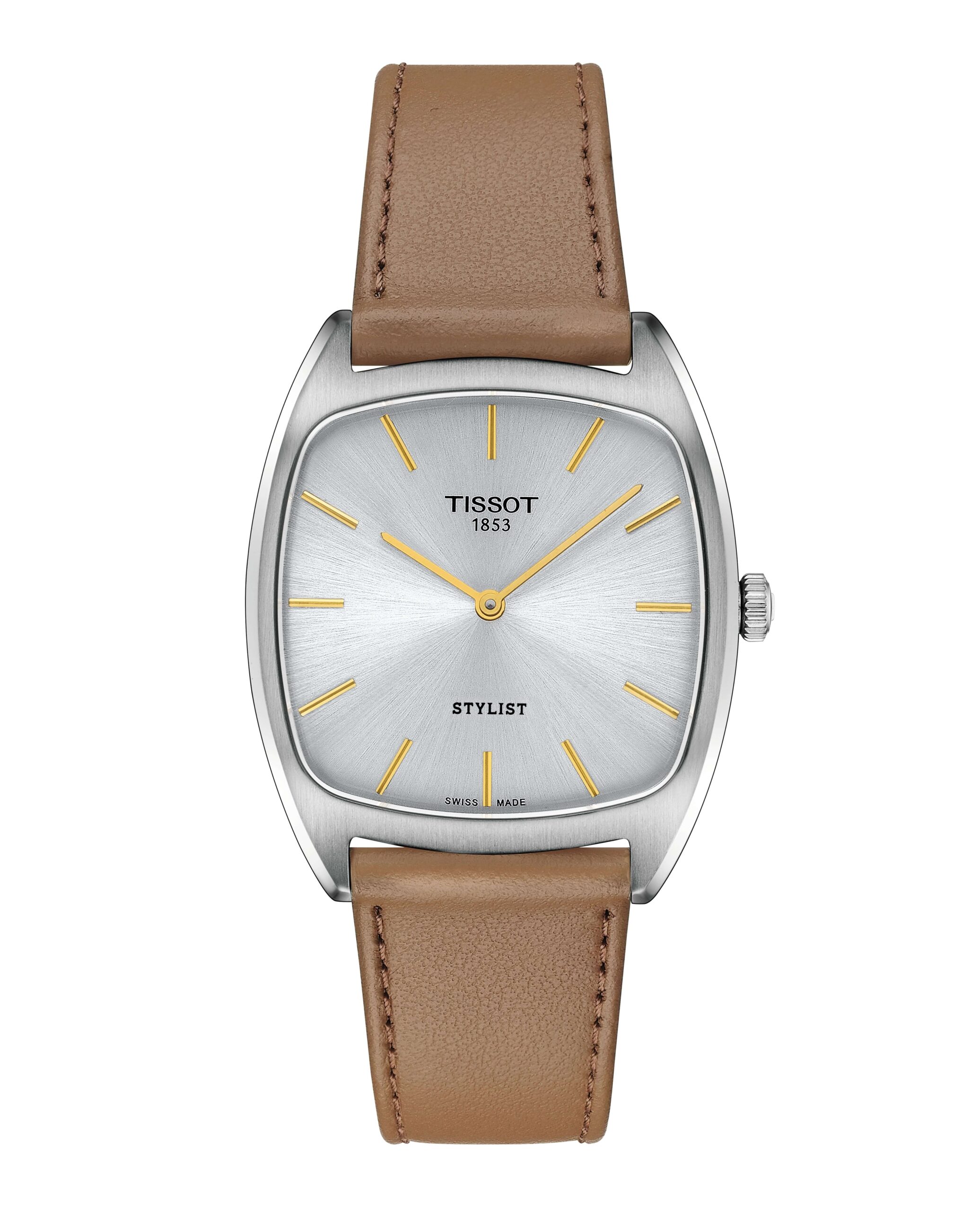Tissot Revives an Archive Icon from the 1960s

In 1965, Tissot introduced its seminal PR 516 timepiece, inspired by the racetrack, its perforated bracelet mimicking the steering wheels of that era. With a performance-driven aesthetic, the watch was sporty, modern and sought-after, even gracing the wrists of film stars like Roger Moore. By 1968, the PR 516 had evolved into a chronograph and has since remained a mainstay in Tissot’s portfolio, with numerous iterations over the years.
But that year also marked the debut of another timepiece that deserves a place in the brand’s history: the Tissot Stylist, a watch that had long been forgotten — until today. At that time, the sentiment of the 1960s favoured bold, expressive design. Think of the Rolex King Midas or the Patek Philippe Golden Ellipse.
The 1960s were a decade of contrasts. While activism, the Cold War, the Vietnam War and fears of communism dominated headlines, design was thriving. A counterculture driven by freedom, rebellion and youth was challenging conventions, especially in fashion and design.
The watches produced during that era were unorthodox, uniquely shaped, audacious and fun, and it’s no surprise that they still possess an enduring charm, captivating today’s collectors. This is why we were excited when Tissot revived the Stylist under its Heritage collection, a line that continues to breathe new life into the brand’s most iconic pieces.

A Brief History
While Tissot today is often seen as an entry-point brand for younger consumers, the Heritage collection serves as a reminder of the maison’s long-standing contribution to Swiss watchmaking, dating back to 1853.
Tissot was first started by father-and-son duo Charles-Félicien and Charles-Émile Tissot as a comptoir, assembling watches from the various part-makers from across the region. Back then, watches were built piecemeal by different specialists, and assembled by these comptoirs. While its watches were sold in Switzerland, it found a thriving market in the Russian Empire, and it also received numerous awards for its innovations.
By the 1920s, when Russia was closed off to international trade, Tissot had to pivot. It grew from strength to strength, becoming one of the key players in Swiss watchmaking of that period. It innovated and launched many firsts, from the 1971 Tissot Astrolon, also known as the IDEA 2001, which was the world’s first plastic mechanical watch, to the 1985 RockWatch, that was made of Granite from the Alps.
Its Heritage line has been seminal in celebrating its deep, storied history: In recent years, we’ve seen the return of the elongated “Banana” watch from 1916, with its oversized numerals and Art Deco sensibility. Chronographs from the 1960s and 1970s have also been central to this revival, balancing historical fidelity with modern-day relevance.

The Stylist, Reborn
This brings us to the Stylist, which was re-released in 2024. First launched in 1965, it was built to be produced at scale—a fun and stylish timepiece, targeting a younger audience with its affordable price tag.
We need to reiterate that this was pre-quartz crisis, when the watch industry was still producing mechanical watches that were difficult to industrialise on a scale of affordability. This makes the Stylist quite the anomaly for its time, proof of Tissot’s knack for reading market demands and taking bold, creative risks. Its tagline, “Innovators by Tradition”, is clearly far from hyperbole.
The watch came in a variety of colours and stood out for its ombré dials. It featured a tonneau-shaped case and a manually wound movement. Though archival details are limited, the Stylist appears to have been produced well into the 1970s. We would make the bold assumption that the quartz crisis probably forced Tissot to recalibrate and streamline its watch collections, and the Stylist was one of the casualties of that period.

In 2024, the Swiss watchmaker relaunched the watch under its Heritage collection. Priced at USD 370, it now comes equipped with a quartz movement, keeping the timepiece svelte at 7mm and measuring 32 x 32mm. The cushion-shaped case feels very much of the moment, with its pared-back aesthetic, brushed case, ombré dials, and protruding lugs.
It is currently available in two references, both of which offer differing styles. The first is a stainless version with a blue fume dial, meaning that the colour darkens towards the edges. The dial features silvered Arabic numerals, and paired with a dark blue strap, it’s the more modern of the two options.
The second leans more vintage: a silver-grey dial with golden baton numerals and hands, paired with a camel strap. The blend of silver and gold feels nostalgic and retro, appealing to collectors and vintage enthusiasts alike.
While the watches of 1965 were described as youthful, we would classify these iterations as minimalist and slightly more formal – perfect, perhaps, for that first interview or for a collector seeking a piece of Tissot’s history.
For more on the latest in luxury watch reads, click here.
The post Tissot Revives an Archive Icon from the 1960s appeared first on LUXUO.




